Painting and pushing the limits of the DAO landscape
Or exploring new pastures for Do-Good DAOs
This month, we take a deeper look into DAOs, explore the landscape, ask questions about “common good” and group sizes, and explore some ideas for new kinds of DAOs.
Part 1: Painting the DAO Landscape
The DAO buckets
Web of DAOs
Part 2: Stranger Things
The search for “good” amongst random online people
Part 3: The Wild West of Do-Good DAOs
Do Good DAOs
Exploring new forms of DAOs
On and on we DAO
*If you’re familiar with the DAO landscape, then I suggest scrolling down to Part 2.
Painting the DAO Landscape
When I first started learning about crypto I was overwhelmed and got lost pretty quickly in the landscape. I tried to get my hands on a map to help navigate the space and learn how all these things were connected. Unfortunately I never found one. Something like this map from Bankless, which came out a couple weeks ago, would have been helpful:
I. The DAO Buckets
Just when I started to get a grasp on crypto I began getting lost in the DAO rabbit hole. I had a lot of questions. How many are there? What does each one do? What are the different kinds? Where am I? Who am I?
Well, I haven’t come across any maps yet, but I have met a bunch of friendly people on the side of the road who’ve given me directions.
As far as the landscape goes, @coopatroopa has done a good job of breaking DAO types into seven little buckets in this post and image below.
According to Cooper, we have about 100 DAOs, operating with about a billion dollars. But surely there’s more DAOs out there… right? Likely they exist as smaller networks and smaller bank accounts. I’m curious to discover new ones and learn about their objectives. In fact, maybe someone should create an RFP to a granting DAO, and we can hire someone to create a running inventory of DAOs. Maybe someone already has, and I just don’t know about it!?
In terms of Know buckets, I’m definitely in bucket 4.
Perhaps there are even DAOs buckets outside of these seven? I’m not sure. And I want to find out. But let’s start by summarizing @coopatroopa’s buckets to get a lay of the land. If you’re already familiar with these categories, keep scrolling.
1. DAO operating systems
They provide the tools to create your own DAO.
For example, DaoHaus is a DAO for DAOs, which allows anyone to launch and run their own DAO using the open-source, no-code platform Moloch.
2. Grant DAOs
Essentially all DAOs act like Grant DAOs. Members vote on proposals to which funds are allocated. Typically, they tend to be projects that help grow an ecosystem.
MetaCartel for instance, is a community of about 800 people worldwide which serves to bolster the Ethereum network. They’ve deployed about $90,000 USD in grant funds, and supported over 23 DApps and pilot projects.
As far as I know, as the name implies, Grant DAOs don’t seek to get a return on their money.
3 & 4. Investment DAOs and Collector DAOs
These two are more like venture capital funds. They vote on projects and proposals that will return more equity. In the case of Collector DAOs, usually it’s buying NFTs.
We talked about theLAO and Flamingo in our last post.
5. Service DAOs
You can think of a service DAO like a talent agency for crypto projects (and perhaps beyond). Or as Cooper puts it “From legal to creative, governance to marketing, development to treasury management, Service DAOs create funnels to contract web3 mercenaries”.
It’s almost like the meat of a Wework building. I mean, the humans inside.
6. Media DAOs
Next, we have Media DAOs: decentralized communities that produce and consume content. I’m not sure why Mirror isn’t on Cooper’s list (maybe because it’s a tool, not a DAO?), but it’s an interesting example where writers can collaborate on publications and readers are rewarded for digesting and sharing content. In their open, collaborative platform, they define themselves as “somewhere between a Google doc and a company”.
Bankless DAO is on his list though, and I’d highly recommend their podcast.
7. Social DAOs
Lastly*, we have Social DAOs. This one should be the easiest to define, because essentially they are just groups of people chatting on forums like Discord. But, it gets a big murky because some Social DAOs like Friends With Benefits are gated to social token holders (e.g. $FWB), while others are more public (e.g. Seed Club).
* I say “lastly”, but I still believe there are more buckets out there, I (we?) just haven’t discovered them yet. Kinda like the early days of the periodic table.
The Web of DAOs
You can see how each one of these DAOs is part of a larger ecosystem - interconnected in some shape or form. For example, a Granting DAO may put out a grant that incentivizes someone to build a tool or service that improves the cryptospace experience. Service DAOs may put together a team, utilizing a Protocol DAO tool to build it, while an Investment DAO may further fund it and Media DAOs spread awareness about it. It’s a bit of a cesspool.
Part 2: Stranger Things
The search for Good amongst random online people
A few notes on Friends With Benefits (FWB), online strangers, group sizes and ‘common good’.
Goodbuy, Stranger
OK, this is going to sound snooty, but because FWB is a gated community, it helps me trust people inside the group more. For example, I found my Axie scholar thanks to FWB (as opposed to going through another public Discord channel). And yes, crypto is full of scammers, and you should never trust anyone, but at least with FWB I feel safer. Or maybe that's just me foolishly letting my guard down.
Come on, that’s good.
In addition to trust, striving for a “common good” feels possible with social tokens, even amongst a large group of strangers - despite the fact that cooperation typically diminishes when your circle starts to expand. CBC’s podcast Ideas episode “Common Good | What If This Gets Bigger?” does a good job exploring this problem. The whole thing is worth a listen, but I just grabbed some soundbytes:
“People have dramatically lowered inhibitions in dealing with strangers, when it comes to free-riding”
That’s to say that guilt, as an inhibition, diminishes if it affects people you don't know. You’re far less accountable amongst strangers. And as group size rises, so too does the number of strangers and unfamiliarity. This makes large-scale shared efforts challenging.
“Humans have never succeeded at cooperating at the global scale… with a problem as wide-ranging as climate change”.
This raises some questions...
Will Social DAOs in the future aim to solve bigger, more global issues?
Right now, many environmentalists believe the only way to solve a global problem like climate change is through strict centralized global authority. Something akin to the United Nations.
This is something I dare not propose amongst our decentralized-leaning folks here. But can we envisage a DAO-like entity accomplishing this? Time shall see.
Size Matters. Up to a point.
What are the limits, in terms of member size, of DAOs? And what are the optimum numbers?
Right now, many DAOs seem to be composed of around a hundred members.
Though for many, such as investment DAOs, this is mainly due to SEC rulings as accredited investors (which legally cap membership at 100 individuals). The Dollar Collective, which I’ll get into below, was at about 100 members, though that was perhaps arbitrary.
Historically, or more like prehistorically, homo sapiens evolved to form group sizes of about 150 members. Larger the group size meant better success in things like fighting off predators and foraging for food. But larger group sizes also brought challenges - like who to trust, how to deal with free-loaders, etc.
This group size number, 150, is sometimes referred to as Dunbar’s Number or Dunbar’s Theory, and it’s based around the idea that we can’t really maintain social connections beyond 150 people. It even shows up in many group sizes to this day - from offices, communes, church groups, and maybe DAOs?
Hundreds of thousands years ago, the act of collaborating in large groups was quite a complex feat for our small mammalian brains. How do I convince a stranger like Orgar to help me fetch water? What’s in it for him?
A lot of scientists believe that the reason our little monkey brains grew was directly tied to increasingly complex social relationships. “We required greater neural processing power so that we could keep track of who was doing what to whom”.
[But ants are pretty remarkable social beings, with very complex social relationships. And well, let's face it, they have tiny brains. Although, they do perform actions that appear to be hardwired. Dare I say, smart contract-like?]
And assuming that our brains won't grow much larger in the next few hundred years, can our hard-limit of groups expand beyond 150? Even with social networking sites like Facebook, our social circles haven’t grown much in the last twenty years. Sure, maybe we know more people compared to just fifty years ago, but the relationships of people we interact with and have meaningful, trustful relationships with start to level out at about 150 still to this day. (The number ranges in terms of your type of relationship).
So backing up a bit, will and can DAOs change this hard cap for group sizes?
It takes a lot of mental and physical energy to process social currency amongst 500 people - help a friend move, send birthday messages, keep track of favours (wait, you guys don’t keep a list?!). It all adds up.
And that’s just for one individual. In the case of random strangers forming groups online, and sharing a common objective, it would appear to be quite challenging to manage cooperation beyond 150 people. But hard written rules, via smart contracts, are likely to reinforce trust, compliance and good behaviour… so maybe we can grow larger sizes?
If so, then what is the optimal number for a DAO? I really don't know, it’s too early to say. But it’s something I’m curious to see.
Do Gooders
Last question is - and this is going to all connect, don’t worry - can we use DAOs to perform inherently “good” actions?
I just watched Zhao’s film Nomadland last night. I found the film very inspiring in how it portrays the goodness in people. Now, I’ll leave out the question if humans are fundamentally “good”, but I do think there are “good” people out there. And I am excited to see how DAOs can connect these people.
Side note: I also just learnt that the vandweller Bob Wells (a character in Nomadland) is a real guy, who plays himself. Pretty cool.
In Part 3, I explore how we can create new kinds of DAOs to do “good” things together (like Bob Wells!). And while you’ll see how these ideas are intended to selflessly fund projects outside the DAO (and the cryptoverse in general), I do think they have great potential for raising awareness and interest in DAOs and the crypto space… so in a round about way they’re self-serving at the same time. For example, FWB could benefit from funding a, or even starting their own, “Kind DAO” if their actions led to media coverage and increased interest.
Let me explain.
Part 3: The Wild West of Do-Good DAOs
While Granting DAOs typically grant projects that directly strengthen the crypto ecosystem, there’s some wiggle room for granting DAOs to do so indirectly too. That is, granting projects that help spread awareness about DAOs, while not putting the resources into DAOs or crypto directly.
Now, there are probably already DAOs doing this. I just haven’t come across any. If you know of some, please share below in the comments.
But if this is new territory, let’s brainstorm some ideas.
i. Do Good DAOs
I’ve been interested in the concept of grant DAOs for about a decade now. I’ve always loved the idea of people pooling resources and ideas to create something bigger than the sum of its parts. Of course back in the early 2010’s, before smart contracts, they didn’t go by “DAOs”. Or really any name. And while I’m sure some forms of them existed, I didn’t know of anything that functioned like a granting DAO. So in 2012, I started one with my own social ‘DAO like thing’, called the Dollar Collective.
The basic idea was for a group of ~100 people to contribute $30 each to carry out small random acts of kindness. Each month, we’d propose, discuss and vote on ways to spend the money; typically $1 from each member, or about $100 per act.
Our mission was to do kind things for others in the community (i.e. outside our membership). With just $1 each, we believed small change could make a difference in the world. Cute.
It was a fun experiment. We did everything from buying strangers meals, giving warm clothes to homeless people, supporting local charities, leaving random envelopes of money around the city, and planting trees in public places (turns out the city of Vancouver didn’t approve of the last one).
We got some press, and were even featured in the book Happy Money. ( As the book investigates, one of the best ways you can spend your money is by giving it away...well, at least in terms of your own happiness). Soon people around the world wanted to join. But I ran into a few problems:
We aimed to be a collective with no hierarchy, but ultimately I had control over everything.
People had to trust me with the money. I was the only person who had access and control over the funds.
There wasn’t full transparency of accounts and transactions. I posted pictures of receipts and shared excel sheet balances but it still felt shady.
There wasn’t a proper platform for gatekeeping and governance. We used Facebook, which wasn’t bad, but I still had to monitor everything.
Transactions fees took a toll on small transfers of money.
Crypto, smart contracts, and DAOs (tools, protocols governance models, etc.) solve all of this. And that’s part of the reason for this post. To discuss ways in which we can expand DAOs to do ‘good’ things.
So let’s dive in.
ii. Exploring new forms of DAOs
First, let's imagine a platform that lets anyone create, manage and govern their own DAO.
OK, this imagination may be realized with tools like DaoHaus. If you guys know of better tools, let me know.
Next, let’s imagine a Kindness DAO like the Dollar Collective. It could look something like this:
Name: Small Change
Type: Random Kindness DAO
Membership: Public, $12 annual
# of Members: 100
Annual Budget: $1200
Number of acts: 12/yr
Objective: Spread kindness.
Funding: Internal
Spending: Armchair Quarterback + Hands On [I’ll explain these categories below]
Like the Dollar Collective, you could have hundreds of Kindness DAOs around the world bent on funding random acts of kindness. I’ve written a basic proposal on how this could look here.
Or, you could get a bit more specific with your DAOs.
Name: Confederacy of Dan’s
Type: Random Kindness DAO
Membership: Private to Dan’s, $5 annual
# of Members: 2000
Annual Budget: $10,000
Number of acts: One. Big. One.
Objective: Bring honour to the name Dan by doing selfless and kind acts once a year.
Example Act: Pick a couple random cities, pay for a food truck to give out free food for a day, on behalf of all Dans.
This could work for any name or special group, of course. But I’ve explored this idea a bit further here for Dans.
And you can also start to imagine DAOs that blur the line between kindness, performance, art, and well, just general intrigue. For instance:
Name: Travelling Circus DAO
Type: Flash Mob DAO
Membership: Public, by donation.
# of Members: 1000
Annual Budget: $21,000
Number of acts: 3/yr
Objectives: Carry out flashmobs and art performances. Plus, fund/create public art.
Funding: Internal + External
Annual Budget: $10,000
Example Act: Put on a random Broadway show at the new CityDAO location in Wyoming.
Or, maybe something like the Travelling Circus, but a bit more mysterious….
Name: Quilt and Dagger DAO
Type: Secret DAO
Membership: Anonymous, global, free.
Number of acts: 6/yr
Objectives: Create mysterious and coordinated experiences and/or works of art.
Example act: Remember those monoliths that popped up all over the place… well imagine that. But more of them, and bankrolled.
Or, maybe there aren’t any safety rails…
Name: WhAcKY No Rulez DAO
Objective: Not defined.
On and on we DAO
I’m just spitballing here. But you can see how the possibilities are endless. And the frameworks for each of these DAOs also aren’t binary***. In fact, I’d love to chat with more people on SeedClub and FWB on how to expand these ideas. And heck, I’m also keen to start or join any DAO like the ones mentioned above.
We’re still in the very early days of DAOs.
So get me at @zuchinni_hands on Discord or at @danrobhawkins on Twitter. And let’s DAO big things together.
Ed Notes:
* That was a very quick summary. I realized my length for this post was getting way too long.
* If you’re just getting into DAOs, check out Meta Cartel, FWB, SeedClub, ForeFront
* I also want to summarize my lessons from running the Dollar Collective, which may be useful for people running a granting DAO. Maybe that will be another short post soon.
***I’ve laid some basic granting DAO models (below) but, again, it could all be on a sliding spectrum:
Funding Models: How DAOs receive their funds
Internal vs External
DAOs could receive outside funding to perform tasks (dependent) rather than funding the DAO themselves (independent). For example, an outside organization may want to fund projects (e.g. to market themselves or raise awareness about a cause) or an entire DAO to carry out acts. Decisions on how to spend the funds would still be decided by the DAO members. But in this sense, members act more like actors and not funders.
Spending Models: How DAOs spend their funds
Active vs Armchair Quarterback
Members could give the funds to its members (Hands on) or to people outside of the DAO (Armchair Quarterback) to carry out the actions, or some blend between the two. For example, members could decide to fund a local artist that’s not a member to, say, paint a mural, on behalf of the DAO, instead of performing the act themselves.
Membership:
This includes everything from Private vs Public membership (e.g. Only people named Dan are allowed) to subscription models (e.g. One time fee, or annual memberships, by donation, free to join, etc.).
Objectives:
This one is intuitive. But each DAO could have their own unique objective. For example, some could be geared around specific causes or communities - like helping elderly people or refugees.



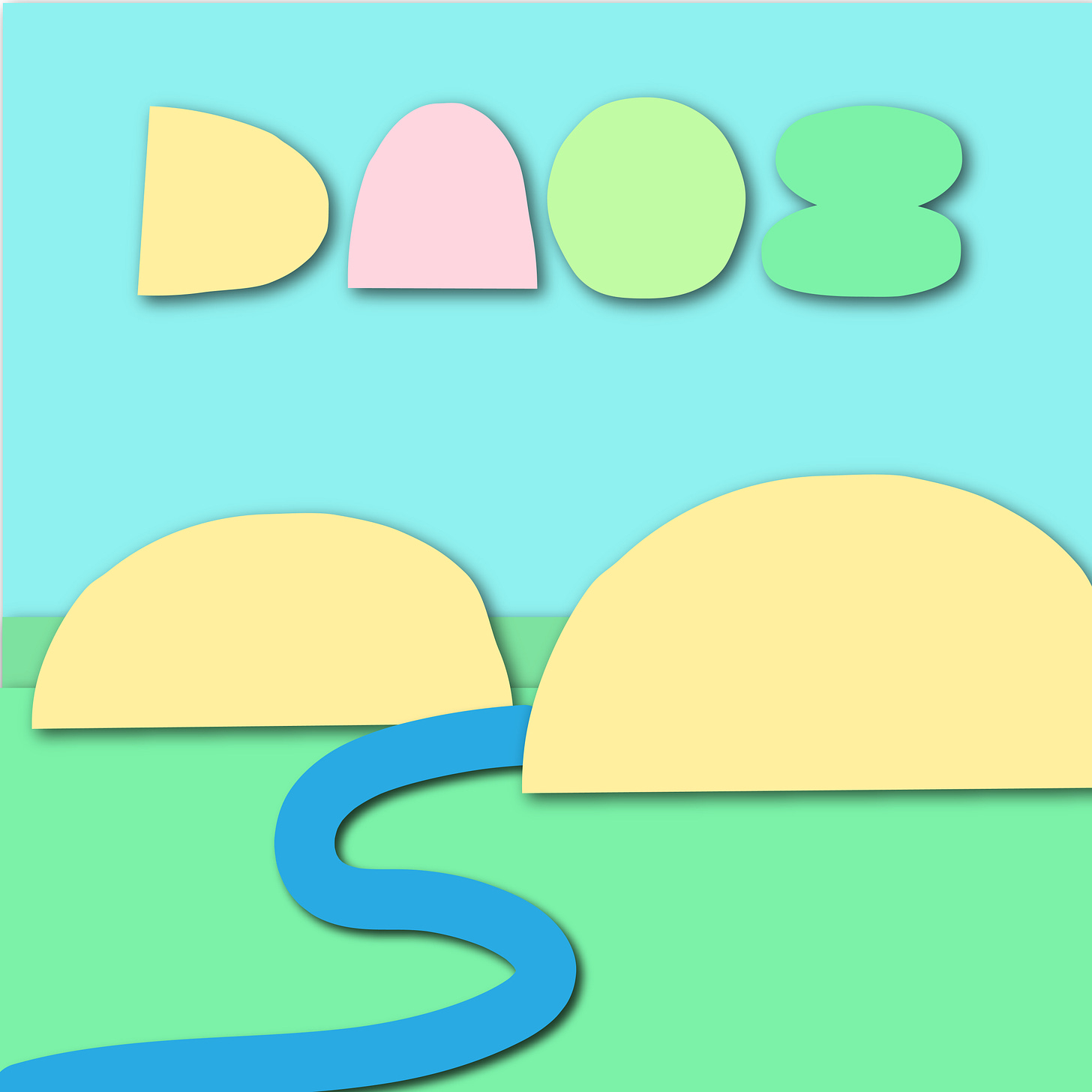
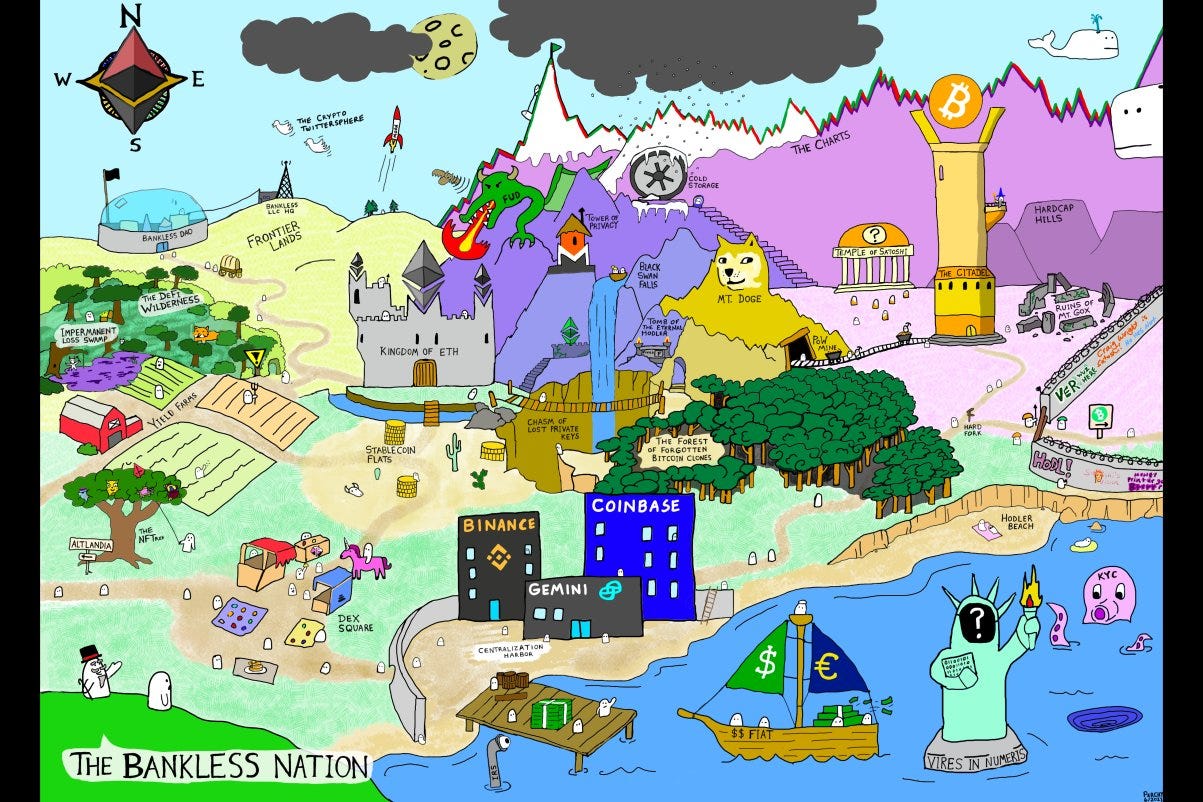
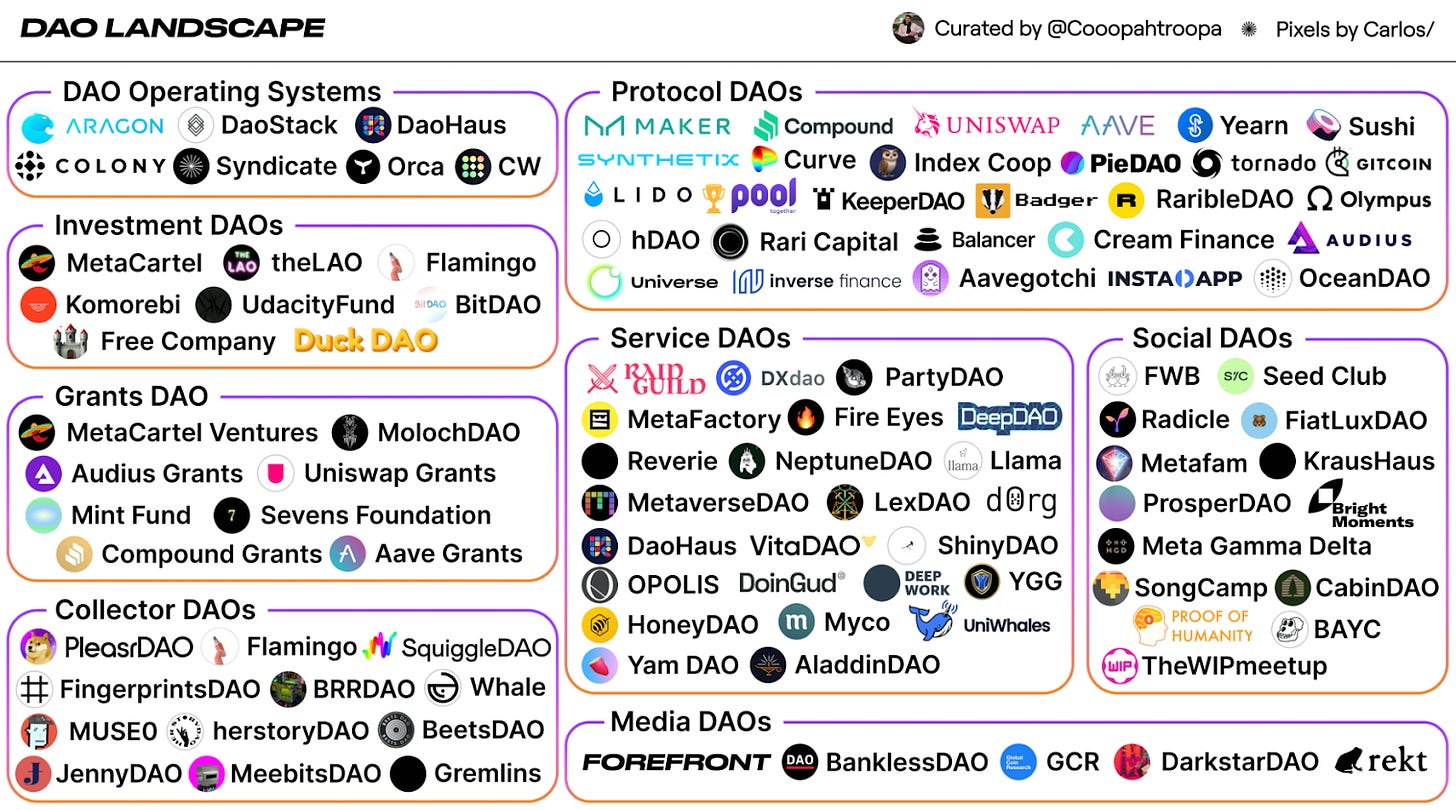
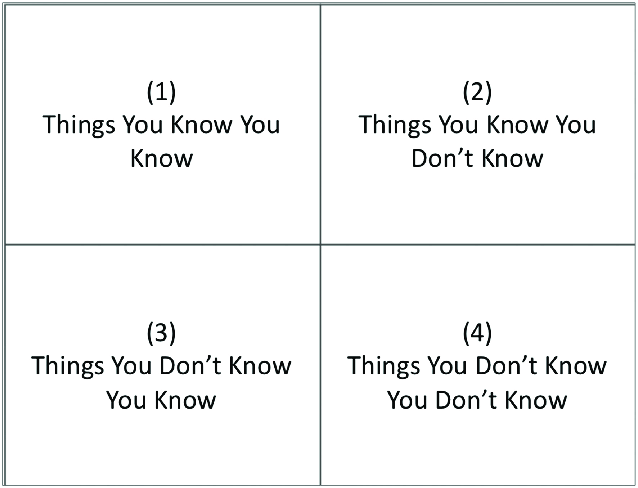

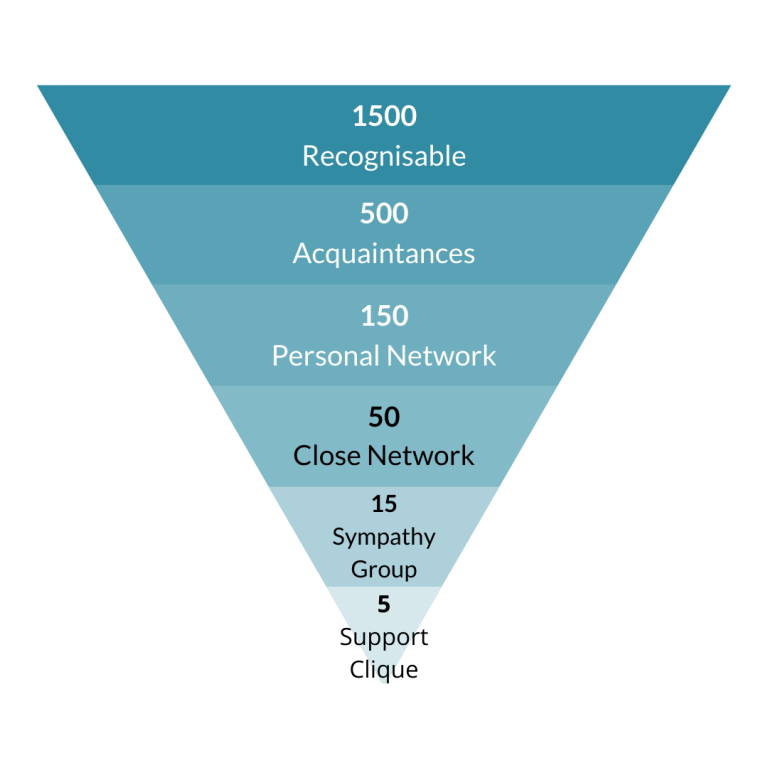
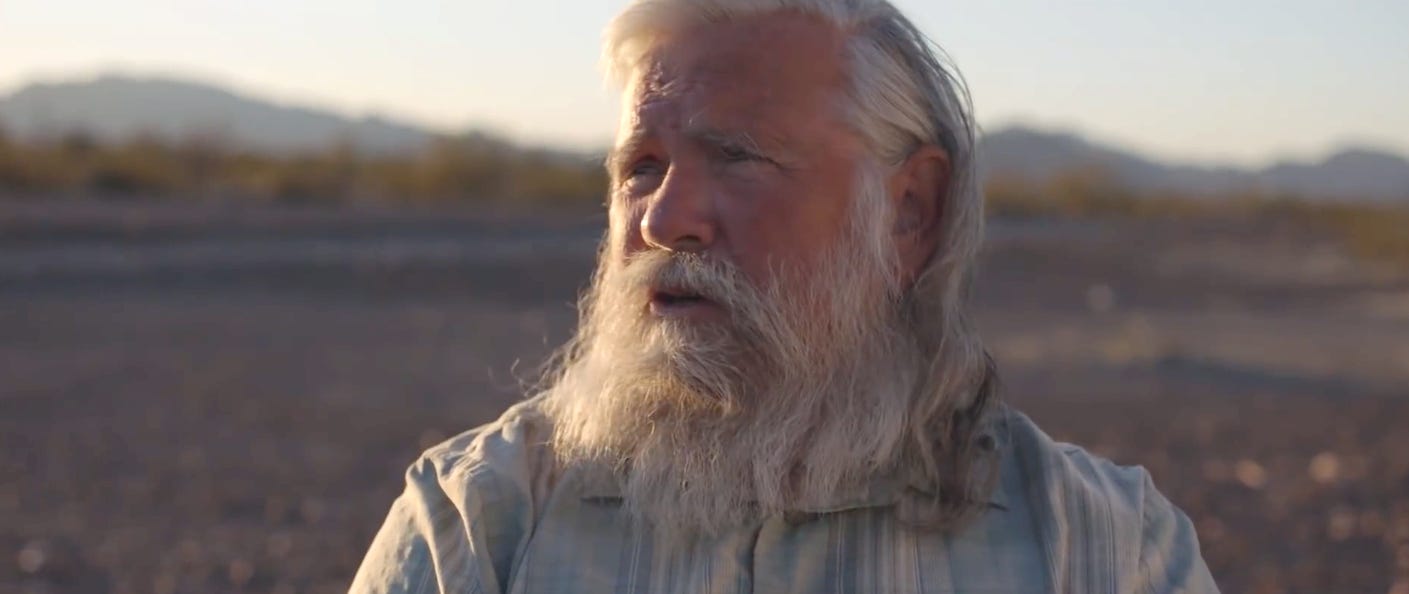
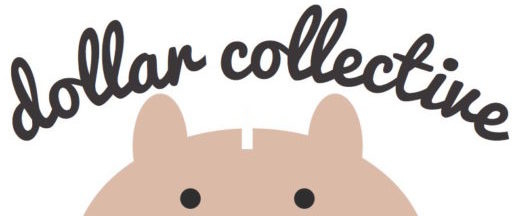
I'd like write my next article about "How I joined/created a Do Good DAO... and here's Seven things I learned".... But, may need to join forces with some DAOers first : )